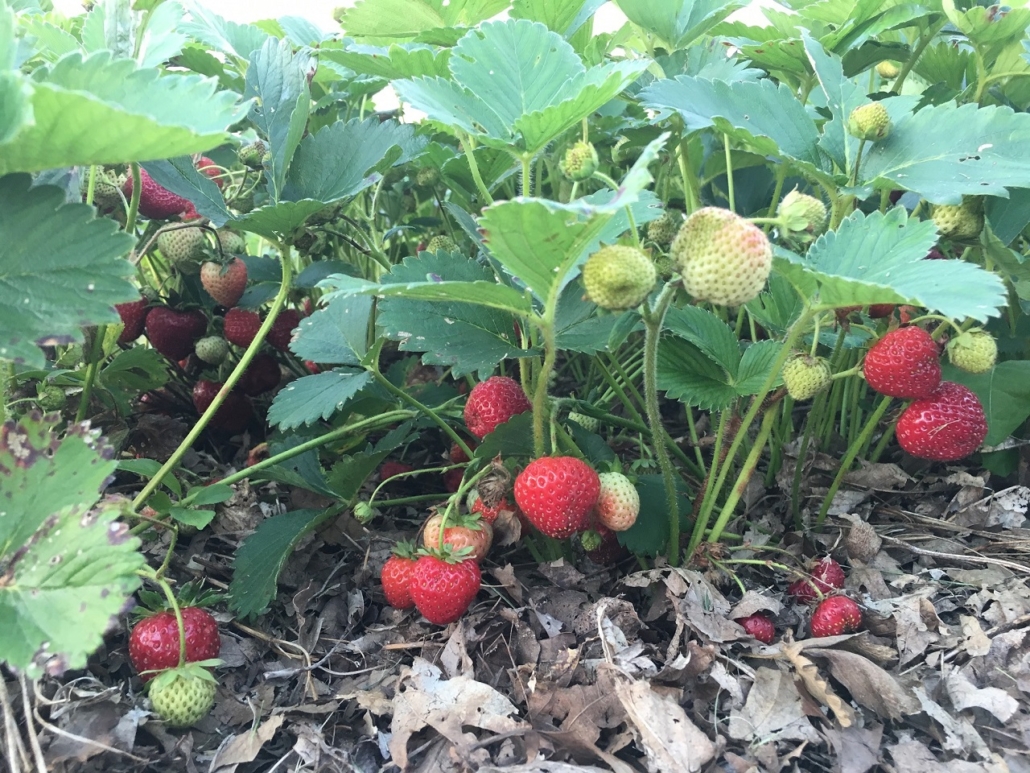SMALL SPACE GARDENING: Always room for strawberries

Delizz® is a day-neutral strawberry that was the first ever strawberry to be selected as an All-America Selections winner. (photo courtesy of MelindaMyers.com)
by Melinda Myers
As you plan this year’s garden, be sure to include some strawberries. They are low in calories, high in vitamin C and antioxidants, and provide seasonal interest in gardens and containers.
Best of all, you don’t need much space to grow this delicious fruit. There are three types of strawberries: June or spring bearing, everbearing, and day neutral. Select the best type of strawberry for your space and harvest needs.
June-bearing strawberries produce one crop of berries in late spring to early summer, depending on where you garden. They produce the largest harvest but in the shortest span of time. Plant now and enjoy an abundant harvest next year.
Everbearing strawberries usually produce two crops of berries each year. You’ll enjoy fresh strawberries early and late in the season, while day-neutral plants produce berries throughout the growing season.
Delizz®, a day-neutral strawberry, was the first ever strawberry to be selected as an All-America Selections Winner. Just like the flower and vegetable winners, it was tested nationally and selected for its performance for the home garden. This 2016 winner is a compact plant perfect for hanging baskets, containers or garden beds. It can be started from seed or transplants and will produce sweet fruit the first year and all season long, even during hot weather.
Up the ornamental appeal of traditional in-ground plantings with a star shaped or tiered bed. The elevated beds make for easier planting, weeding, and harvesting. You’ll find a variety of tiered shaped beds to purchase or plans to make your own.
Use strawberries as a groundcover in sunny well-drained locations for an abundant harvest. Their attractive leaves, white flowers, red fruit and brilliant red fall color add sparkle to the landscape and provide fresh fruit for your meals.
Or grow them in a container, window box or hanging basket on your porch, balcony, or deck. They’ll be close at hand and easy to harvest.
Mix a few everbearing or day-neutral strawberries in with flowers to create an edible and ornamental planter. The harvest will be smaller when grown in a mixed container, but the flowers, fruit and fall color add ornamental appeal and the fruit will be a welcome treat.
Boost the harvest by growing strawberries in their own container. Fill a hanging basket and watch as the runners cascade over the edge for added ornamental appeal.
Try filling a traditional strawberry pot – container with planting hole openings on the top and sides – with plants that produce several harvests and remove the runners as needed. Keep all the plants from top to bottom looking their best with this DIY watering device. Place soil on the bottom of the container. Set a couple of perforated PVC down through the planter. Slide the plants through the hole from the inside of the pot. Fill the remaining space with soil. Gently tamp and water thoroughly to eliminate air pockets. As you water, the water travels through the pipe and out the holes, providing moisture to all plants from top to bottom.
Check containers daily and water thoroughly and often enough to keep the soil slightly moist. Reduce maintenance and increase success by incorporating a low nitrogen slow-release fertilizer into the soil at planting or sprinkle over the soil surface as needed. This type of fertilizer promotes growth without interfering with flowering and fruit production.
Start now identifying spaces to add strawberries to your landscape, deck and balcony. Then order seeds or plants early for the greatest selection. Before you know it, you’ll be enjoying garden fresh strawberries in your morning cereal, salads or as a snack at the end of the day.
Melinda Myers has written more than 20 gardening books, including The Midwest Gardener’s Handbook and Small Space Gardening. She hosts The Great Courses “How to Grow Anything” DVD series and the nationally-syndicated Melinda’s Garden Moment TV & radio program. Myers is a columnist and contributing editor for Birds & Blooms magazine. Her website is www.melindamyers.com.
Responsible journalism is hard work!
It is also expensive!
If you enjoy reading The Town Line and the good news we bring you each week, would you consider a donation to help us continue the work we’re doing?
The Town Line is a 501(c)(3) nonprofit private foundation, and all donations are tax deductible under the Internal Revenue Service code.
To help, please visit our online donation page or mail a check payable to The Town Line, PO Box 89, South China, ME 04358. Your contribution is appreciated!


Leave a Reply
Want to join the discussion?Feel free to contribute!